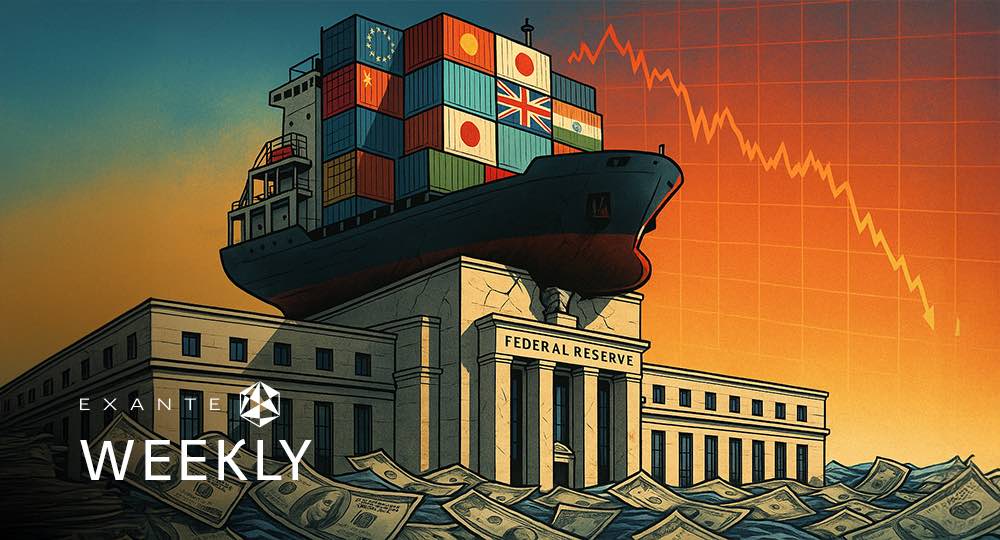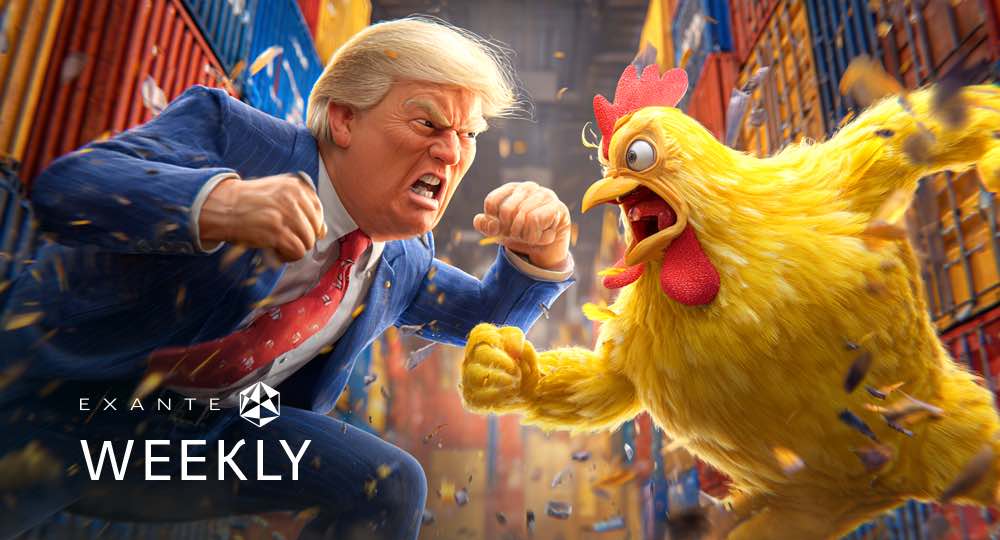 | Horacio Coutino, multi-asset strategist |
With respect to possible tariffs, we are working across our supply chain logistics network and assembly plants so that we are prepared to mitigate near-term impacts. Many of these actions are no cost or low cost. What we won't do is spend large amounts of capital without clarity.
Mary Barra,
Chair & CEO, General Motors.
Given the fluid nature of policy and a lack of clarity on which proposals (or social media posts) are negotiating tactics and which are potential enactments, at the time of this writing - something we’ll underscore throughout this piece - our goal is not to deliver definitive conclusions. Instead, our aim is to explain the analytical framework that shapes our assessment.
From March madness to April insanity: what happened?
The catalyst for a dramatic regime shift in global trade came on ‘Liberation Day’ on 2nd April when US President Donald Trump signed an executive order enacting reciprocal tariffs on US trade partners. This was swiftly followed by a universal 10% tariff on all US imports, effective from 5th April. Approximately 60 countries were slated to face even higher tariffs from 9th April. However, Canada and Mexico received more favourable treatment although the previously announced 25% tariffs on goods not compliant with the USMCA remained in place. At the time of writing, the EU still faces a 20% tariff, and the UK a 10% tariff. A majority of Asian trading partners face steeper tariffs; 46% for Vietnam, 36% for Taiwan and Thailand, and 32% for Indonesia. Japan is subject to a 24% tariff.
These actions increased existing US tariff levels approximately 10-fold. A static analysis suggests this could increase the tax burden on US importers by approximately $750 billion, or 2.5% of GDP. The magnitude of the tariff increase surpasses any since World War II.
The tariffs were structured into two components, first, a 10% baseline tariff that is unlikely to be negotiated down, and second, an additional tariff rate that could decline following negotiations with trading partners. However, the permanence of these additional tariffs remains highly uncertain. The US President's statement that tariffs may ‘increase or expand in scope’ should trading partners retaliate suggests uncertainty over the final effective US tariff rate. This will, in turn, potentially prolong risk-off market sentiment.
On the morning of 9th April, the initial implementation of the ‘reciprocal’ tariffs took effect. However, in a dramatic turn of events that very afternoon, these rates were unexpectedly revised downward to 10% for all countries except China for a 90-day period. This revision did not apply to existing sectoral tariffs on steel, aluminium, automobiles, and goods from Canada and Mexico not covered under the USMCA agreement.
The United States Trade Representative’s (USTR) methodology for calculating ‘reciprocal’ tariffs is considered, by many, as highly dubious as it is based on perceived currency manipulation and trade barriers. The formula, which simply divided each trading partner's trade deficit with the US by its imports from the US, has been criticized as economically unsound and underwhelming.
According to the new administration, layering these measures—an additional 10% global tariff, sectoral tariffs, global auto tariffs, and higher reciprocal tariffs—is merely the initial phase of a broader strategy. Although President Trump has suggested that his goal is to pressure other countries to lower tariffs or reduce their trade surpluses, other motives seem to be at play. What this strategy aims to do is fundamentally reshape the post-WWII global trade and financial architecture, adapting it from a US-led system to one suited for a more multipolar world. However, the penguins of the Heard and McDonald islands would suggest otherwise, contending that there's a clear lack of attention to detail in the execution of this so-called strategy. His strategy has thus far only been successful in creating widespread uncertainty. His administration is clearly intent on reasserting geopolitical hegemony, but, thus far, it has only managed to deliver market chaos.
The possibility of additional sectoral tariffs, targeting pharmaceuticals, semiconductors, or critical minerals, remains a concern and could amplify macroeconomic costs and market volatility in the short term. Additionally, ‘reciprocal’ tariffs, as announced on 2nd April, represent significant demand destruction in different sectors of the US economy.
While the US expressed openness to negotiations with some nations, trade tensions between the US and China, its third-largest trading partner, escalated dramatically. Following multiple rounds of retaliatory measures from both sides, current tariffs stand at 145% on Chinese exports to the US and 125% on US imports into China.
Due to these various actions implemented by the White House, the Peterson Institute for International Economics (PIIE) estimates the average US tariff on all goods imported from the rest of the world (excluding China) saw a significant increase from 3.0% to 10.3% between 20th January and 11th April.
As of 12th April, PIIE estimates that the average US tariffs on Chinese exports now stand at 124.1%. These tariffs are more than 40x higher than before the US - China tariff war began in 2018 and are already 6x higher than the average US tariff on China of 20.8% when the second Trump administration began on 20th January.
China has retaliated with three waves of its own tariffs, raising the average rate on US exports to 147.6%. Initially, these tariffs covered 58.3% of US exports, then expanded to 63.0%, and finally encompassed all US imports starting on 10th April, with a uniform retaliatory tariff of 84%.
本文提供給您僅供資訊參考之用,不應被視為認購或銷售此處提及任何投資或相關服務的優惠招攬或遊說。






